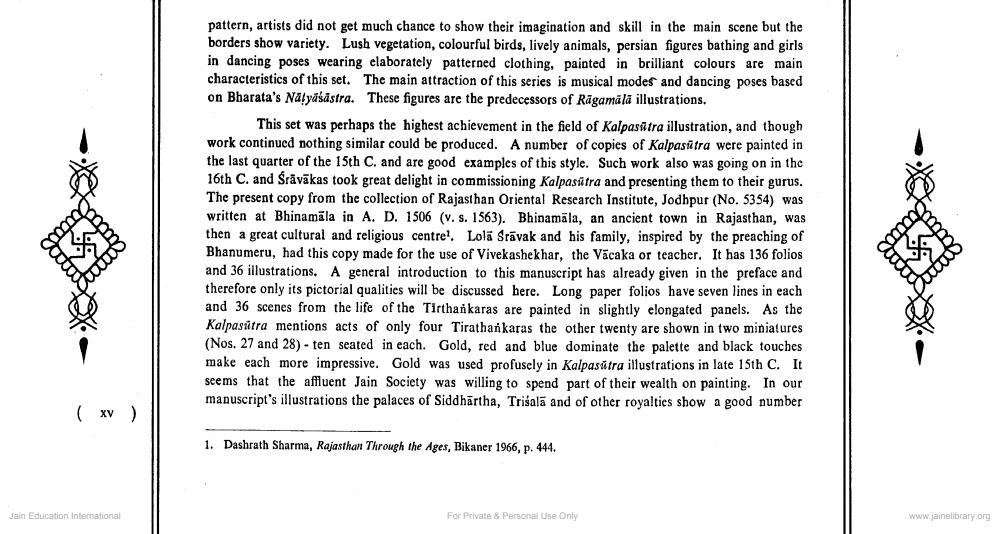________________
pattern, artists did not get much chance to show their imagination and skill in the main scene but the borders show variety. Lush vegetation, colourful birds, lively animals, persian figures bathing and girls in dancing poses wearing elaborately patterned clothing, painted in brilliant colours are main characteristics of this set. The main attraction of this series is musical modes and dancing poses based on Bharata's Natyusastra. These figures are the predecessors of Ragamala illustrations.
This set was perhaps the highest achievement in the field of Kalpasitra illustration, and though work continued nothing similar could be produced. A number of copies of Kalpasitra were painted in the last quarter of the 15th C. and are good examples of this style. Such work also was going on in the 16th C. and Sråvākas took great delight in commissioning Kalpasätra and presenting them to their gurus. The present copy from the collection of Rajasthan Oriental Research Institute, Jodhpur (No. 5354) was written at Bhinamala in A. D. 1506 (V. S. 1563). Bhinamala, an ancient town in Rajasthan, was then a great cultural and religious centre! Lola Sravak and his family, inspired by the preaching of Bhanumeru, had this copy made for the use of Vivekashekhar, the Vacaka or teacher. It has 136 folios and 36 illustrations. A general introduction to this manuscript has already given in the preface and therefore only its pictorial qualities will be discussed here. Long paper folios have seven lines in each and 36 scenes from the life of the Tirthaikaras are painted in slightly elongated panels. As the Kalpasstra mentions acts of only four Tiratharkaras the other twenty are shown in two miniatures (Nos. 27 and 28) - ten seated in each. Gold, red and blue dominate the palette and black touches make each more impressive. Gold was used profusely in Kalpasätra illustrations in late 15th C. It seems that the affluent Jain Society was willing to spend part of their wealth on painting. In our manuscript's illustrations the palaces of Siddhartha, Trišala and of other royalties show a good number
( xv )
1. Dashrath Sharma, Rajasthan Through the Ages, Bikaner 1966, p. 444.
Jain Education International
For Private & Personal use only
www.jainelibrary.org




